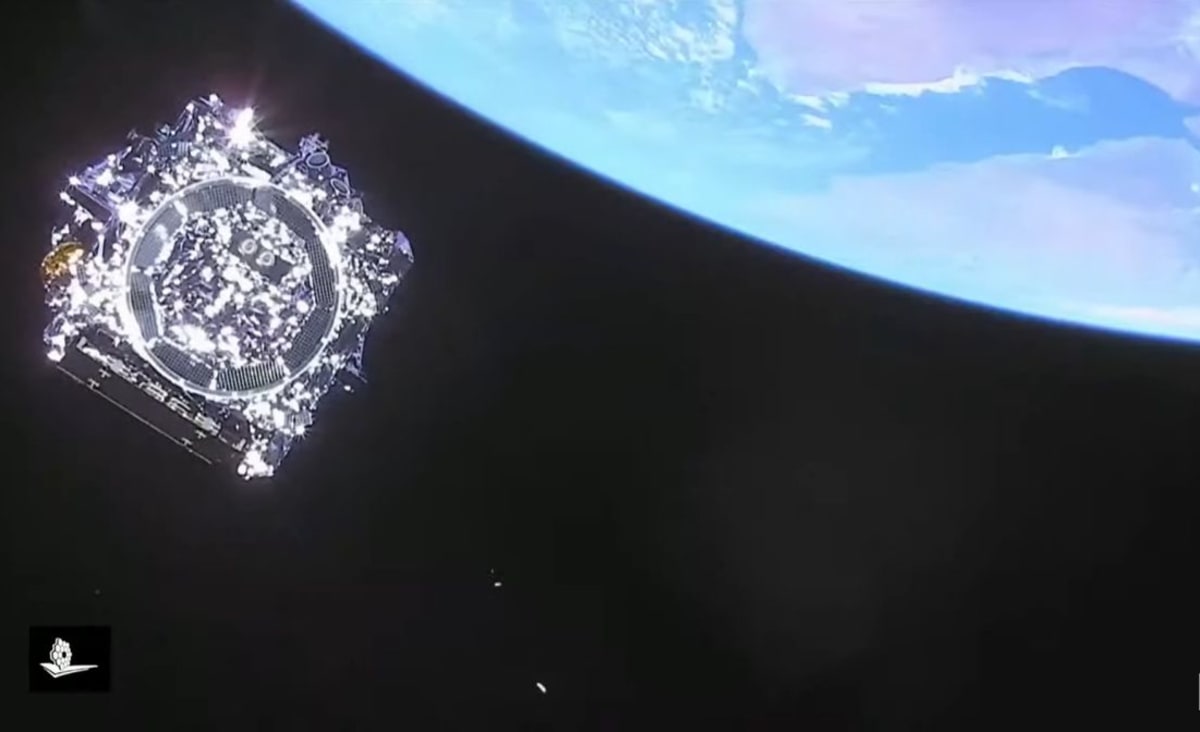
www.space.com
'29 days on the edge:' What's next for NASA's newly launched James Webb Space Telescope
The James Webb Space Telescope is finally aloft, but it'll be a while before it starts its highly anticipated science mission.
Science & Tech
NASA's next big space observatory is finally aloft, but it'll be a while before it starts its highly anticipated science mission.
The $10 billion James Webb Space Telescope launched atop an Ariane 5 rocket from French Guiana yesterday (Dec. 25), kicking off a long-delayed, potentially transformative mission to study the early universe, nearby exoplanets and more. Telescope team members (and the rest of us) will have to remain patient, however, for Webb has a lot of work to do before it gets up and running.
The telescope is headed for the Sun-Earth Lagrange Point 2 (L2), a gravitationally stable spot 930,000 miles (1.5 million kilometers) from our planet in the direction of Mars. It'll take 29 days for Webb to get there, and there will be lots of nail-biting action for the telescope along the way.
"The Webb observatory has 50 major deployments … and 178 release mechanisms to deploy those 50 parts," Webb Mission Systems Engineer Mike Menzel, of NASA's Goddard Space Flight Center in Greenbelt, Maryland, said in a deployment-explaining video called "29 Days on the Edge" that the agency posted in October.
"Every single one of them must work," Menzel said. "Unfolding Webb is hands-down the most complicated spacecraft activity we’ve ever done."
Webb has notched a few major milestones already. About half an hour after liftoff, for example, it deployed its solar panels and started soaking up energy from the sun. And last night, the big telescope performed a crucial 65-minute engine burn that put it on course for L2.
The following is a brief rundown of the big steps yet to come. (For more detail, see NASA's Webb deployment site.) The timelines given are approximate; Webb team members have stressed that the deployment schedule is flexible, so don't panic if the times and dates shift a bit, or if some things occur out of order.
One day after launch, Webb will rotate its high-gain antenna toward Earth to further facilitate communications with its handlers. A day after that, the spacecraft will perform another engine burn to refine its trajectory toward L2. And three days after launch, the pallet holding Webb's huge sunshield — a five-layer structure designed to keep the infrared telescope and its instruments cool — will be lowered.
























































